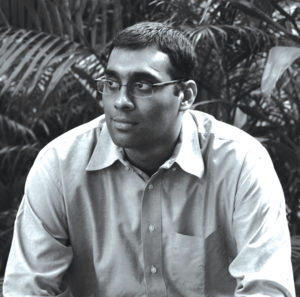
I listened to Prime Minister Narendra Modi’s speech on Day 1 of the week-long Make in India event held between February 13th and 18th, 2016. Of course, like he always does, this one too held the audience in rapt attention for over 30 minutes. He spoke about why an initiative like Make in India will succeed in India, specifically highlighting three factors – democracy, demography and demand. If there is one thing we cannot fault this government about, it is its genuine interest in boosting the economy, emphasis on job creation and overall, a clear focus on development.
For this special edition on Make in India and the manufacturing ecosystem in the country, we decided to interview 12 business leaders, mostly CEOs or Managing Directors of mid-size and large manufacturing companies in India. We ensured that there was representation from several sectors including engineering, automobile, electronics, alternative energy, machine tools, construction and infrastructure, that gave us a glimpse into the overall manufacturing landscape.
Additionally, we also invited two subject matter experts from KPMG and Grant Thornton to comment on whether key announcements made at Budget 2016 were in sync with the government’s vision for Make in India.
One question that popped up across our interviews revolved around one key point. It was: What should India’s USP be to position itself as a manufacturing hub? China, which is, of course, the world’s most sought after manufacturing hub has already built excess capacity and, is therefore, offering extremely competitive prices.
How are we going to position India as the right destination? Clarity on tax structures, labour laws, regulatory frameworks and infrastructure development is paramount. Based on our interviews with these 12 manufacturing leaders, infrastructure seemed to be the biggest concern, especially with relation to logistics and movement of goods. The other question revolved around how exactly do we train both our skilled and unskilled workforce? If technology and digitization of manufacturing is real, what do we train our future workers for? How should our vocational education programs evolve? It is all these factors that need to come together to develop a robust ecosystem to make in India.
The bigger aspect, as pointed by our columnists from KPMG, SV Sukumar and Shridhar Kamath, is this: we need to create a unique identity and USP for India as a key manufacturing destination. It is this aspect that’ll become our competitive advantage in attracting both global and domestic companies to manufacture in India.
The government should take steps to identify this USP and work towards setting policies to achieve the relevant positioning. To use a tangential example, Silicon Valley became what it is because of a wonderful university, availability of talent and large amounts of risk capital. China succeeded primarily on the back of competitive prices and reliable delivery.
Considering we’re late to the manufacturing game, and keeping in mind the government’s ambition of 25 per cent contribution from manufacturing to the overall GDP, what should our positioning be? It could be the country with the best infrastructure, but that will take time. It could be the country with the best skilled workforce for technology-driven digitized manufacturing, but that field is just evolving.
Whatever be the positioning, the government must ask itself this question – ‘What is India’s manufacturing DNA?’ – and implement the Make in India initiative keeping the answer in mind.
Hope you enjoy reading this edition.
Prem Kumar
EDITOR